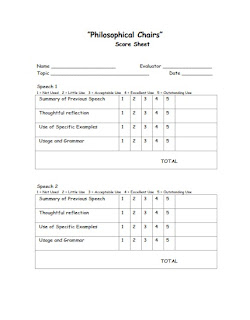When I lesson plan I divide my lesson plan into these 5 parts and I use these 5 questions to guide my instructional planning.
1. Anticipatory Set/Prior knowledge (5-10 mins) -- What do I already know about the subject? This is usually a short, warm up activity.
2. Direct Instruction (15-20 mins) -- What do I need to learn about the subject? 20 mins is the maximum time I lecture or speak to the class in one chunk. This includes modeling an activity for students before they will do it in groups or independently.
3. Guided practice (15 mins) -- Can I do this with guidance? This is usually a pair or group work activity undertaken with my guidance. It can also be a teacher facilitated discussion like Socratic Seminar or an activity where I guide students through a process that I have already modeled for the class .
4. Independent practice (15-20 mins) -- Can I do this alone? Sometimes this is done after class as homework or it can be a collaborative activity where students must demonstrate their competency without my guidance, like Tutorial or student presentations.
5. Check for
Understanding/Assessment (5-10 mins) -- Do I understand what I learned? What
questions do I need answered? This is often a short closure activity like an exit ticket.
Here are a couple of lesson plan templates I like to use. As always, if you would like the documents, please leave me your email address in the comments.
























